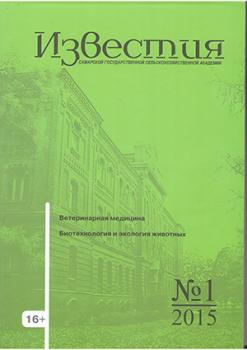Volgograd, Russian Federation
Vologda, Russian Federation
The purpose of research is increasing of pigs meat productivity by application of mineral feed supplements SaltMag. The article deals with the problem of increasing production volumes of competitive products with improved meat quality characteristics. Meat efficiency and quality of meat are predetermined by a number of genetic factors and paratypic. The most significant factor is the feeding. An unbalanced feed ration increases the risk of metabolic disorders in animals, which leads to reduction in productivity. Changes in metabolism and other physiological processes of pigs due to the presence of minerals, the lack or excess synthesis processes which gives the biologically active compounds. Modern breeds of pigs require a higher content of macro- and micro-elements in compound feed in connection with a significant increase in growth rate and productivity. It is known that the protein, energy, minerals must be replenished in a highly available form. However, inorganic salts of transition metals (zinc, copper, iron, manganese) due to the low digestibility and tested in transit in conjunction with the accompanying heavy metal salts pollute the environment. Thus, substantial revision of conventional approaches to mineral nutrition of farm animals is needed. The analysis of the research evidence by the benefits of the trace elements used in the feed production of organic compounds. This is primarily due to higher bioavailability, which can significantly reduce their input in the feed mixture. A significant reduction in the level of trace elements in organic form in compound feed significantly reduces the intake of heavy metals and helps to improve the quality of livestock products.
young, pigs, organic, minerals, meat, productivity
1. Vodyannikov, V. I. Anti-stress drugs and their effect on meat production / V. I. Vodyannikov, V. V. Shkalenko, F. V. Ruzheinikov. - Pig. - 2013. - №2. - P. 26-29
2. Vodyannikov, V. I. Biological aspects of the intensification of pig production on an industrial scale : monograph / V. I. Vod-yannikov, V. N. Sharnin, V. V. Shkalenko. - 2nd ed., rev. and ext. - Volgograd : Volgograd scientific publishing, 2012. - 263 p.
3. Vodyannikov, V. I. Intensification of pig production - as a way of solving the problem of food security in the region / V. I. Vodyannikov, V. V. Shkalenko, F. V. Ruzheinikov // Integration processes in science, education and agricultural production the key to successful development of agribusiness : mat. International scinen-pract. conf. - 2011, 25-27 Jan. - Volgograd, 2011. - P. 169-172.
4. Gorbachev, V. Vitamins, macro- and microelements. - M. : Medical Book, 2011. - 432 p.
5. Zhirkova, T. L. Influence DAPS-25 and tcelloviridina G20x on the meat quality of pigs / T. L. Zhirkova, A. A. Ryadnov // News Nizhnevolzhsky university complex: science and higher professional education. - 2008. - №1 (9). - P. 103-111.
6. Nikolaev, S. I. Innovation as the basis for livestock development in the Volgograd Region / S. I. Nikolaev, K. V. Ezergayl, A. V. Gorbunov, V. A. Chuchunov // News Nizhnevolzhsky university complex. - Volgograd : IPK «Niva», 2012. - №2 (26). - Р. 104-109.
7. Nikolaev, S. I. Comparative analysis of the amino acid composition of feed / S. I. Nikolaev, A. K. Karapetyan, E. V. Kornilova, M. V. Struk // Scientific Journal KubSAU. - 2015. - №107 (03). - P. 1679-1692.
8. Ponomarenko, Yu. A. Safety feed, feed additives and food: a monograph / Yy. A. Ponomarenko, V. I. Fisinin, I. A. Egorov. - Minsk, 2012. - 864 p.
9. Sharnin, V. N. A year of great opportunities // Pig. - 2015. - №1. - P. 4.
10. Kannan, M. Influence of prebiotics supplementation on lipid profile of broilers / M. Kannan, R. Karunakaran, V. Balakrishnan, T. G. Prabhakar // International Journal of Poultry Science. - 2005. - 4 (12). - Р. 994-997.
11. Nasrollah, V. Probiotic in quail nutrition: a review // International Journal of Poultry Science. - 2009. - 8 (12). - Р. 1218-1222.





